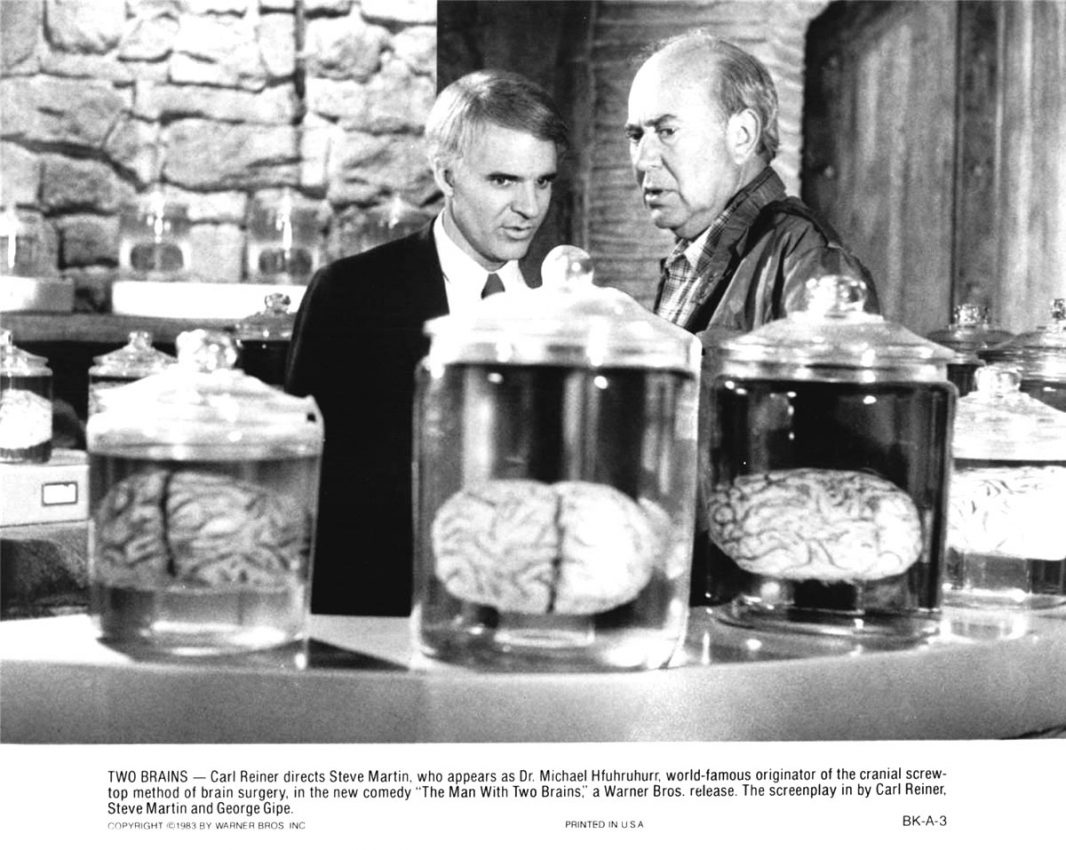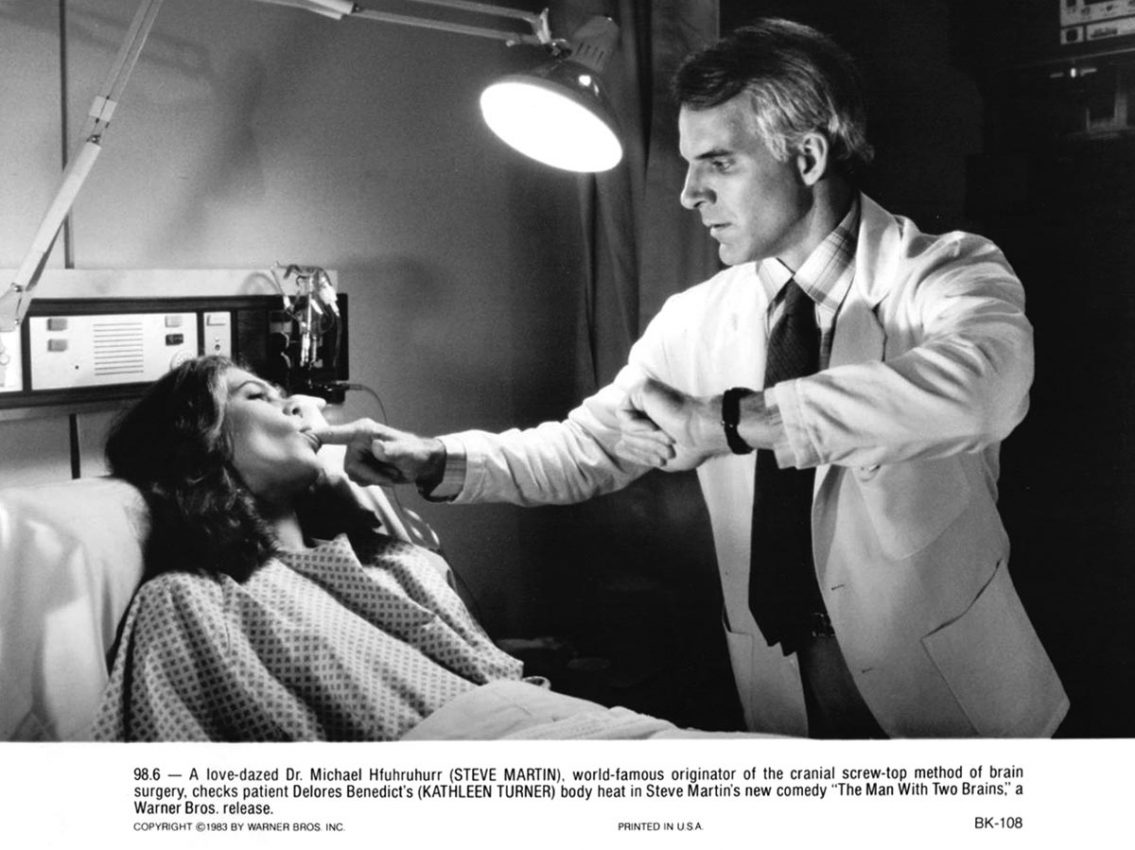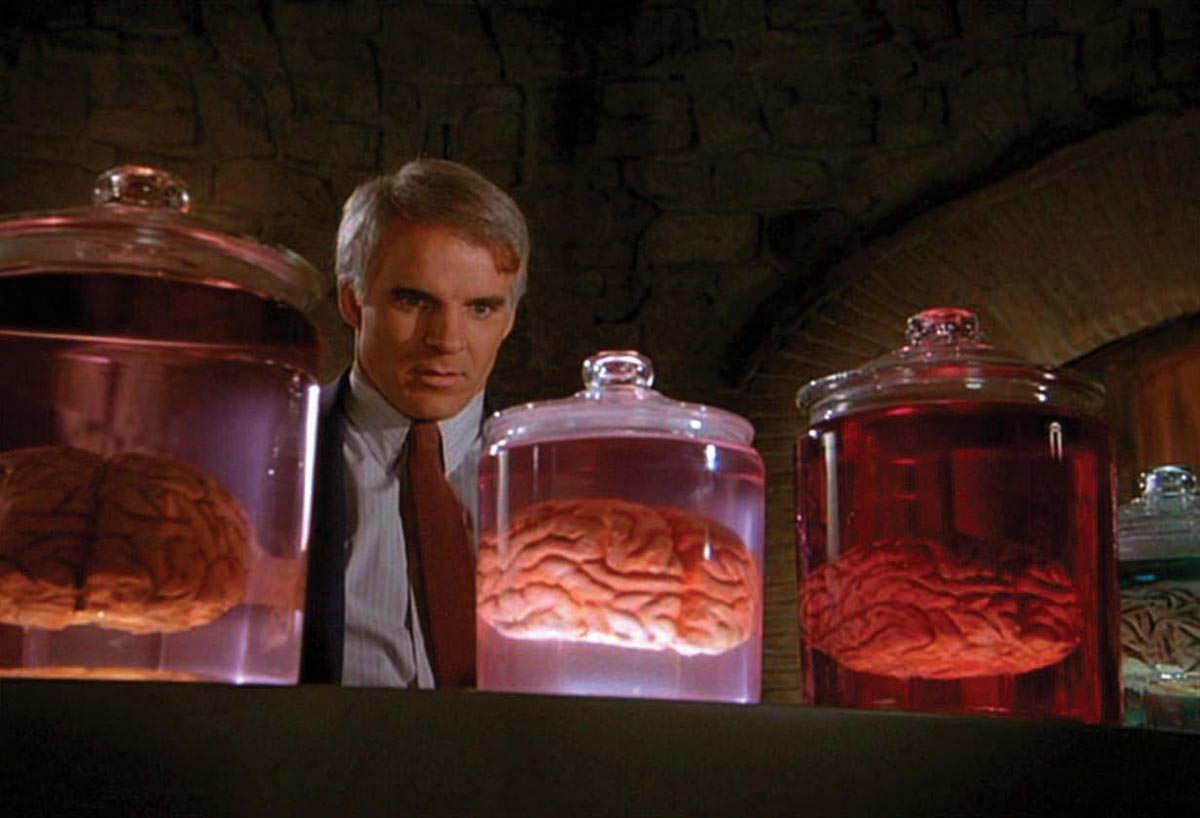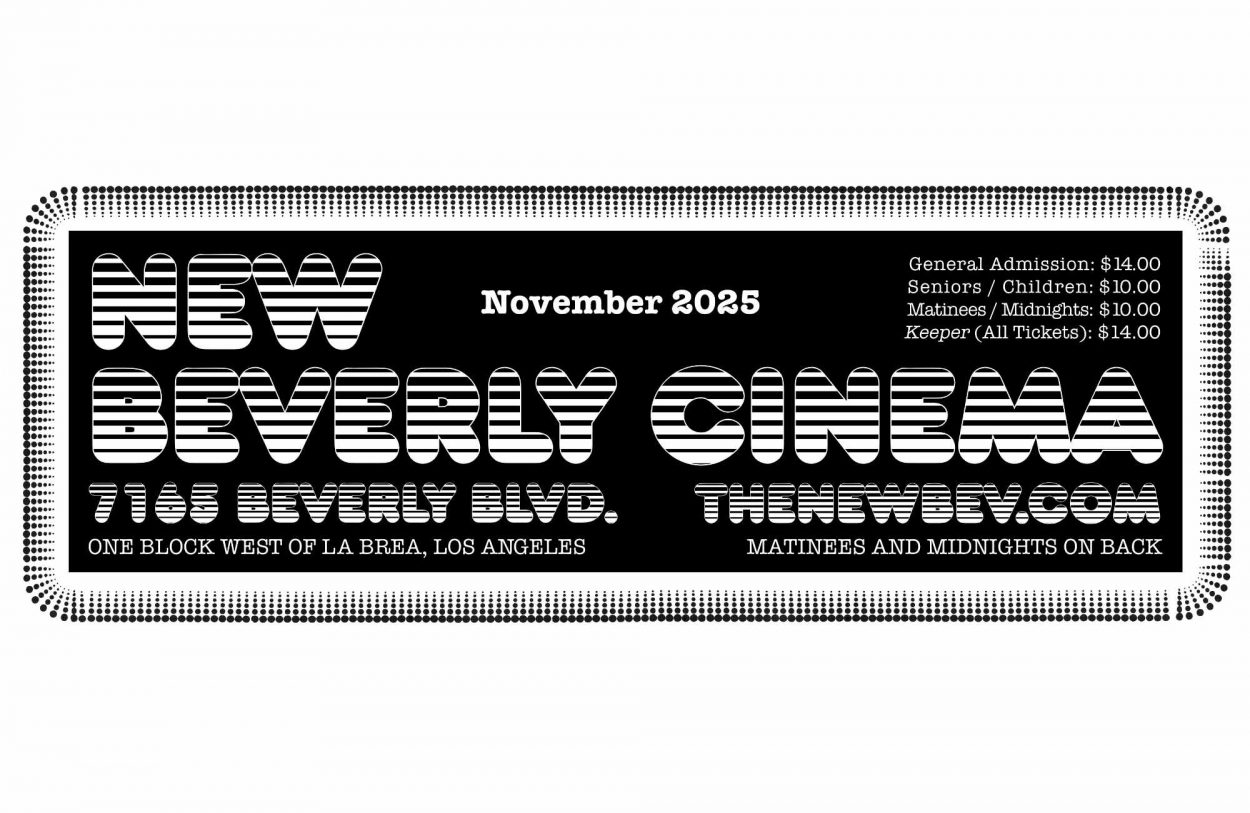First released in the Summer of 1983, The Man With Two Brains was the third feature-length collaboration between Steve Martin and comedy legend Carl Reiner, following The Jerk (1979) and Dead Men Don’t Wear Plaid (1982). Especially with their second film, a technical breakthrough that allowed carefully lighted and staged new material to be seamlessly shuffled with classic film noir footage and stars, Reiner and Martin seemed to be one-upping (and we know how painful that can be) the genre-spoofing territory of Reiner’s former partner, Mel Brooks, while simultaneously inspiring Woody Allen to make one of his own outstanding works, Zelig (1983). As far as movies go, their partnership was arguably the most fertile and rewarding period for both gentlemen.

While The Man With Two Brains is quite a different creature than Brooks’ Young Frankenstein (1974), it feels for long stretches of its set-up like a lollipop-colored, contemporary remake of James Whale’s The Bride of Frankenstein (1935), as superstar brain surgeon Dr. Michael Hfuhruhurr (Martin) crosses paths with an eccentric acolyte, Dr. Alfred Necessiter (David Warner), whose castle-like condo hoards an assortment of parti-colored brains in jars. The overt homage to Whale stops abruptly, at some point, as the film relocates to Vienna, where a so-called Elevator Killer is running amuck in hotel lifts with a syringe full of “Pane in the Glass” window cleaner (it causes the brain to die last) – which, when underlined by Joel Goldsmith’s Goblin-like synth score, evokes Edgar Wallace krimis and Dario Argento gialli that one doubts Reiner (at least) had ever seen. The Reiner-Martin association would continue for one further film, All of Me (1984), which perpetuated the theme of mental transference, less as fantasy than as an opportunity for “fish out of water” comedy for both Martin and co-star Lily Tomlin.
Successful as each of these films was in their own way, The Man With Two Brains seems less notable today as a Reiner-Martin collaboration than the film in which Kathleen Turner first cut loose as a comedic actress. She plays Dolores Benedict, who is introduced in the last moments of a knock-down, drag-out marriage to the wealthy Timon (George Furth), swearing to devote the rest of her life to destroying men. It was only her second film. Turner recalled that her scorching star turn in Lawrence Kasdan’s Body Heat (1981) had led to a wealth of offers, most of which she recognized would have done nothing to advance her career. But The Man With Two Brains was something different: “I wanted this part because it’s a comedy and because the character was so outrageous. I thought, if I was very brave, I could do some extraordinary things with it. It wasn’t a run-of-the-mill, token female role.”

Indeed, it was on the basis of Turner’s work in this film, skillfully juggling eroticism and humor, that Ken Russell determined to cast her as China Blue in his outrageous, NC-17, psycho-sexual comedy Crimes of Passion (1986) – where the “bravery” she had summoned would prove even more useful. Furthermore, it must have been these two roles in particular that inspired John Waters to secure Turner for his last great comedy, Serial Mom (1993). These three Turner roles form a bizarre trinity of fin de siècle binary femininity; not the Madonna and the Whore, exactly – more like the Wife and the Schizo, or maybe the Wife and the “Scum Queen” (the latter an expression that this film apparently helped usher into vogue). She’s so audacious that you believe her when, in the midst of a fight, she groans “Oh, my balls!” – and so alluring you’d let her have her way with you regardless of how you feel about such manly accoutrements.
As funny and attractive as the film’s mad science aspect can be, it frankly pales next to Turner’s vindictive vivacity. Dolores and Hfuhruhurr meet cute in the wake of a road accident when he saves her life with his revolutionary, new “screw-top, zip-lock” brain surgery procedure, which he has now excitingly advanced to the “child-proof skullcap” stage. (It makes sense that one of the interns working under him is none other than Jeffrey Combs, who went straight from this to playing Dr. Herbert West in Stuart Gordon’s now-classic horror film Re-Animator, 1985). Once Dolores recovers, she marries her savior and proceeds to make good on her oath, torturing him on their honeymoon with sexual withholdings (“That was the most exciting sexual encounter – without actually having it – that I ever, almost had”) while simultaneously seducing the hotel help and embarking on a new career of letting strangers touch her bare behind for money (“That’s a career?”). Just as she tires of the game, she intercepts a call informing Hfuhruhurr that a wealthy relative has died, leaving him millions – which ramps up her enthusiasm, just as her Hush-Puppied hubby stumbles into a momentous chance acquaintance: Anne Uumellmahaye – a disembodied brain in one of Dr. Necessiter’s numbered jars.

Sweetly voiced (and occasionally sung) by an uncredited Sissy Spacek, Uumellmahaye is the soul mate Hfuhruhurr has always sought. Martin portrays his famed surgeon as a kind of man-child whose genius is not far removed from the way children invent adult careers for themselves in playtime; in one scene, he is shown as barely knowing more about his work than the average child in the street. He is also shown reading poetry to his recovering wife – not just poetry, but the poetry of the fictional John Lillison, “England’s greatest one-armed poet” (“Oh pointy birds, oh pointy-pointy / anoint my head, anointy-nointy”), also a point of reference in Martin’s L.A. Story (1991). Such lofty lyricism is wasted on Dolores, but it’s ideal wooing material for Ms. Uumelmahaye, with whom he initially bonds over shared knowledge of the song “Under the Bamboo Tree.” The scenes of Martin romancing her – even taking her sun-hatted jar out for a row on a sun-dappled lake, and making a kiss between them possible with a pair of wax lips! – strike a perfect chord of absurdity, perversity, and metaphor for the professional obsessed with his work.
The Man With Two Brains contains a few rough edges, particularly early on, when we see Hfuhruhurr performing surgery in tight close-up, obviously doing two brain procedures at the same time – but the joke’s master shot is reserved for much later in the film, after the humor card has already been played. (“Get that cat out of here!”) Even though the film ultimately went out with an R rating attached, there’s a sense that one or more of the creative partners preferred to err on the side of PG rating, never mind that the story involved sex and sick surgery and a rash of murders in Vienna. This was still pre-PG-13, albeit inclining strongly in that direction, and one feels there must have been extensive bartering with the MPAA over what the film would or could show, what it could say, and where it could go. Perhaps because the R rating was inevitable, it tends to favor sobering nudity over a constant volley of amusing profanity, reserving the F-word for a single particularly gut-busting utterance involving a gorilla. Regardless of the rating, the end product feels more like a moderately soiled PG movie than a conservative R picture.
To see The Man With Two Brains with Michael Chapman’s cinematography and Polly Platt’s production design at their most lustrous, you need to see it other than on DVD (it has yet to make the leap to Blu-ray) – and to see it with all its laughs intact, it’s necessary to see it with an audience. This is your chance: right here at the New Beverly Cinema, on June 23 & 24 at 9:20pm, following Roger Corman’s X: The Man With the X-Ray Eyes.
© 2017 by Tim Lucas. All rights reserved.


